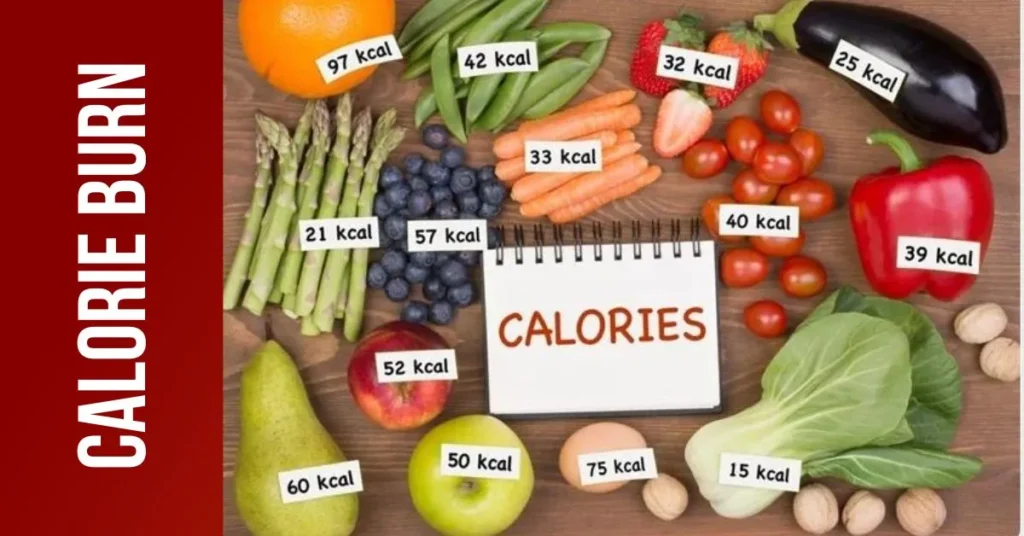
Cycling is one of the most popular forms of exercise that people engage in. It is an excellent way to improve cardiovascular health, increase endurance, and burn calories.
But, how many calories does cycling burn in 30 minutes? In this article, we will explore this question in detail and provide you with everything you need to know about calorie burn during cycling.
Understanding Calories and Calorie Burn
Before we dive into the details of calorie burn during cycling, it is essential to understand what calories are and how calorie burn works.
A calorie is a unit of energy that is used to measure the amount of energy in food and the amount of energy our bodies burn during physical activity. When we consume food, our bodies break down the food into glucose, which our cells use for energy. Any excess glucose is stored as fat.
When we engage in physical activity, our bodies require energy to perform the activity. This energy comes from the glucose stored in our bodies. When we burn more calories than we consume, our bodies begin to burn fat for energy, leading to weight loss.
The Factors that Influence Calorie Burn During Cycling
The number of calories burned during cycling varies depending on several factors, including:
Body Weight
The more a person weighs, the more calories they will burn during physical activity. This is because more energy is required to move a heavier body.
Intensity of Exercise
The intensity of exercise also plays a significant role in calorie burn. Higher-intensity activities burn more calories than low-intensity activities.
Duration of Exercise
The longer the duration of exercise, the more calories will be burned.
Cycling Speed
The speed at which a person cycles will also influence calorie burn. A faster cycling speed will result in more calories burned.
See also: The Impact Of Age On Average Cycling Speed
Terrain
The terrain on which a person is cycling will also affect calorie burn. Cycling uphill or on rough terrain will require more energy and, therefore, result in more calories burned.
How Many Calories Does Cycling Burn in 30 Minutes?
Now that we understand the factors affecting calorie burn during cycling, let’s dive into how many calories cycling burns in 30 minutes. The number of calories burned during cycling depends on your weight, the intensity of your cycling, and the terrain you cycle on.
On average, a person weighing 150 pounds can burn approximately 200-300 calories by cycling at a moderate pace for 30 minutes. However, if you increase the intensity or cycle on rough terrain, you can burn up to 400-500 calories in the same time frame.
A person weighing 200 pounds can burn around 250-400 calories by cycling at a moderate pace for 30 minutes, while a person weighing 250 pounds can burn around 300-500 calories in the same time frame.
Tips for Maximizing Calorie Burn during Cycling

If you want to maximize your calorie burn during cycling, consider incorporating the following tips into your routine:
Increase Your Intensity
One way to increase your calorie burn is to increase the intensity of your cycling. Try incorporating intervals of high-intensity cycling followed by periods of rest or low-intensity cycling. This can help you burn more calories in a shorter amount of time.
Use Interval Training
Another way to increase your calorie burn is to use interval training. This involves alternating between high-intensity cycling and low-intensity cycling or rest periods. Interval training can help you burn more calories and improve your cardiovascular fitness.
Incorporate Hill Climbs
Cycling uphill or on rough terrain requires more effort and burns more calories than cycling on flat terrain. Try incorporating hill climbs into your cycling routine to increase your calorie burn and improve your strength and endurance.
Maintain Proper Form
Maintaining proper form during cycling can help you engage your muscles more effectively and burn more calories. Make sure to keep your back straight, your shoulders relaxed, and your core engaged while cycling.
Cycle in Groups
Cycling in groups can help you stay motivated and push yourself to work harder. Consider joining a cycling club or finding a group of friends to cycle with to increase your calorie burn and make your cycling experience more enjoyable.
The Importance of Proper Nutrition

Proper nutrition is essential when it comes to burning calories during cycling. Consuming a balanced diet that is rich in lean protein, healthy fats, and complex carbohydrates will provide your body with the fuel it needs to perform at its best.
It is also important to stay hydrated during cycling, as dehydration can lead to a decrease in performance and calorie burn.
Common Misconceptions About Calorie Burn During Cycling
There are several common misconceptions about calorie burn during cycling. These include:
You Only Burn Calories During Cycling
While cycling is an excellent way to burn calories, it is not the only way. You can also burn calories by engaging in other forms of physical activity or through daily activities such as walking or cleaning.
Calorie Burn is the Only Benefit of Cycling
Cycling has numerous benefits beyond calorie burn, including improved cardiovascular health, increased endurance, and reduced stress.
You Have to Cycle for Hours to See the Results
Even short periods of cycling can result in calorie burn and other health benefits. You do not have to cycle for hours to see results.
Conclusion
Cycling is an excellent way to improve cardiovascular health, increase endurance, reduce stress, and burn calories. The number of calories burned during cycling depends on several factors, including your weight, the intensity of the exercise, and the duration of the workout.
To maximize calorie burn during cycling, it is important to maintain proper form, increase the intensity, incorporate interval training, and mix up your routine. Additionally, proper nutrition and hydration are crucial for optimal performance and calorie burn.
Cycling also has numerous benefits beyond calorie burn, making it an excellent form of exercise for overall health and wellness. It is important to remember that even short periods of cycling can result in health benefits, and it is not necessary to cycle for hours to see results.
Incorporating cycling into your exercise routine can be a fun and effective way to achieve your fitness goals. By following these tips and maintaining a healthy lifestyle, you can maximize calorie burn and reap the many benefits of cycling.
Frequently Asked Questions
Will I lose weight cycling 30 mins a day?
Cycling for 30 minutes a day can definitely contribute to weight loss, as long as you are also eating a healthy, balanced diet. To see significant weight loss results, it may be necessary to combine cycling with other forms of exercise and make dietary changes.
Can cycling help lose belly fat?
Yes, cycling can help to reduce belly fat, as it is an effective form of cardiovascular exercise that can burn calories and increase metabolism. However, spot reduction (i.e. targeting a specific area for fat loss) is not possible – cycling will help to reduce overall body fat, including belly fat, but it will not exclusively target that area.
Can I burn 1000 calories by cycling?
It is possible to burn 1000 calories through cycling, but it would require a very intense workout for a significant amount of time. The exact number of calories burned will depend on your weight, the intensity of the exercise, and the duration of the workout.
How much cycling burns 500 calories?
The number of calories burned through cycling will vary depending on your weight, the intensity of the exercise, and the duration of the workout. On average, a person who weighs 150 pounds can burn approximately 500 calories in one hour of cycling at a moderate pace.
How to lose 10 kg by cycling?
To lose 10 kg through cycling, it will likely be necessary to combine cycling with other forms of exercise and make dietary changes. It is important to set realistic goals and create a plan that incorporates both cardio and strength training exercises, as well as a healthy, balanced diet.
How many calories is 1 kg?
One kilogram of body weight is equivalent to approximately 7,700 calories. To lose one kilogram of body weight, it is necessary to create a caloric deficit of 7,700 calories through a combination of exercise and dietary changes.






